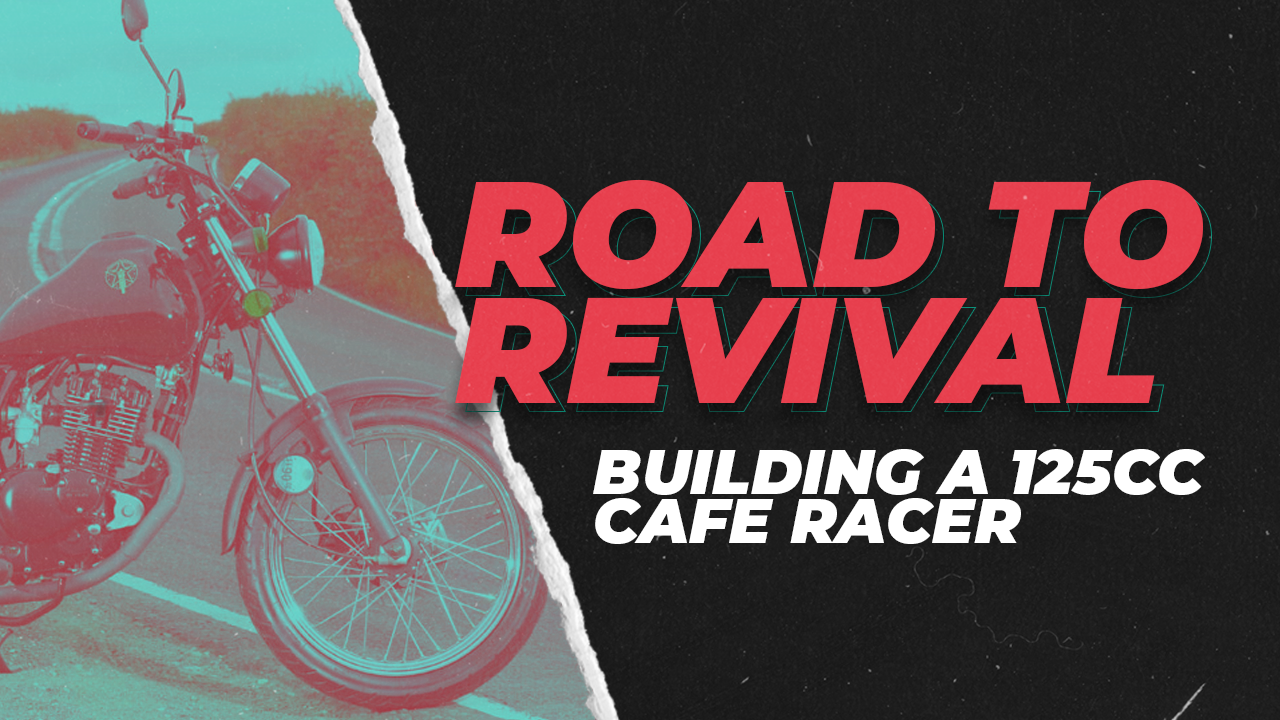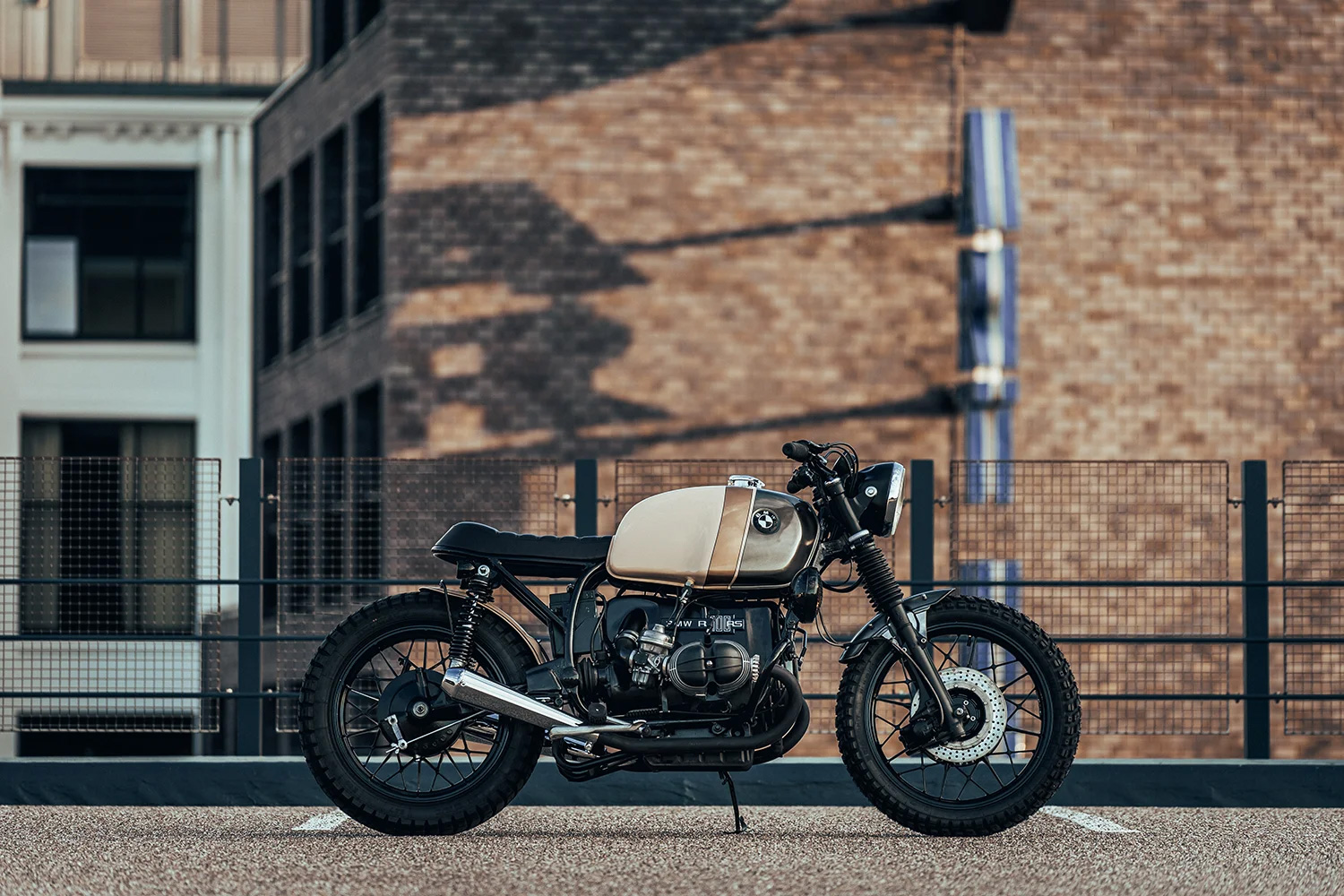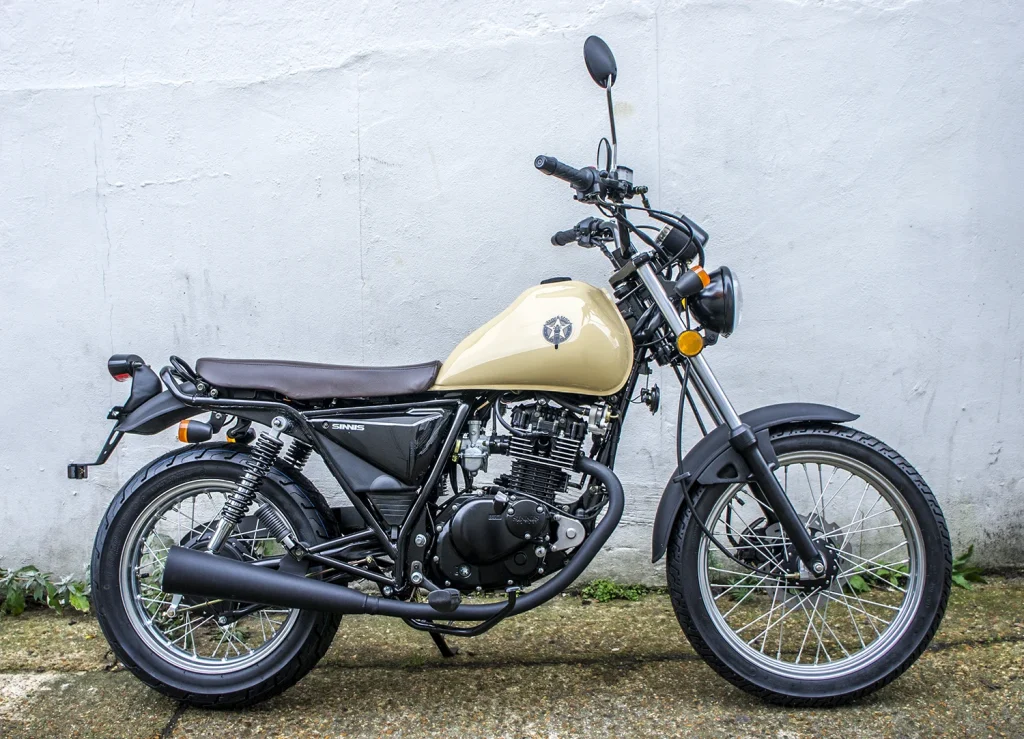Road to Revival: Building a 125cc Cafe Racer

The theme of this year's Goodwood Revival is 'Revive & Thrive'. What better way to prepare for the event (MPW will be in attendance with a stand!) than building our very own small capacity cafe racer?
Choosing a Donor Bike
There are a wide range of options out there for building a cafe racer. Popular (and now expensive!) options include the CX500, any old flavour of BMW K or R series or the ever popular CB750. As the market for these options has exploded, it is difficult to find any one of these at a reasonable price. If you're on a tight budget and looking for a fun little project with a smaller investment of time (lol) and money, 125's are a great option - especially if you are new to riding or returning after a long break. But even old CB125's or Suzuki GN125's aren't particularly cheap these days.
 Photo by Gijs Coolen on Unsplash
Photo by Gijs Coolen on Unsplash
The specific bike we chose as the platform for our project is a bike already owned by one of the team - an old Sinnis Trackstar. This had the benefit of being cheap as chips to pick up, and about as basic as a motorcycle can be. It is air cooled and carbureted (the engine is based on an old GN125). A bike this simple is an easy project to get your teeth into. An added benefit of starting with a platform like this is that if somewhere along the line you make a monumental cockup, you won't have sunk a lot of money into it!

Why build a cafe racer?
Modifying a bike allows you to customise the fit to your preferences. Perhaps the ergonomics don't quite suit you or the style you are interested in. Different handlebars, a lower seat and new rearsets/pegs can completely alter your comfort level. Or conversely - slap on some clip-on bars with a wafer thin flat seat and create a beautifully styled torture rack!
Equally, it is surprising how much of a palpable difference a new set of tyres and a decent aftermarket chain can make, especially on a 125. Your component choices don't need to be purely aesthetic, they can hugely improve the comfort and handling of your bike. That's the great thing about building something that suits you. Not to mention the joy (and pain) of learning how everything goes together. What's the worst that could happen?!
MPW has a range of parts for custom bikes and cafe racers. We are hoping that through our journey with this bike we will be able to give guides on how to fit these parts and share some ideas on how you can use these components in your own project.
Making a Plan
It is important to plot out the steps to completion, allowing plenty of time for unexpected delays or issues. Once you have a rough timeframe in mind, you can begin sourcing everything you need. As a rough idea here is what we are thinking of, for our project:
- Strip the bike down
- Sandblast the frame
- Remove unneeded frame tabs
- Repaint the frame (POR15)
- Plan out the wiring/M-Unit position
- Fit lights/electrical
- Refinish the tank
- Construct a battery box
- Fit new handlebars/grips/seat
- MOT readiness (headlight alignment etc)
- decals
- MOT/completion!!
As with many things, there are several different ways to approach a project like this. Completing your project with the lowest cost will mean doing a lot of the work yourself. As a result, it'll take a lot longer. If you have cash to spare, you can pay someone else to do the work. This is a more expensive option than finishing it yourself, but useful if you want a quicker turnaround. You could even take it to an electrical whizz and have them sort all the electrical doodads. This allows you to focus on the fancy aesthetic choices like seats, headlights and grips.
Follow Along With Us!
We are taking the tough (and cheap!) road, in the hopes that we can inspire folk to undertake a cafe project of their own and learn a few things along the way. I'm sure there are a lot of people reading this with a half finished project bike, who have lost the enthusiasm for it - we want to inspire you to get back on track! We are enthusiastic amateurs ourselves. Despite having worked on my own bikes for years, I have never had a ground up build like this one. How hard could it be?!
If you're looking for a pristine show worthy build, this isn't it. But if you want ideas of techniques and products you can use to get yourself a road worthy cafe racer without breaking the bank, we hope this blog series will be of benefit to you. If you have any input/thoughts or ideas, we'd love to hear them. If you want to say "I've been building bikes for 46 years and you're doing it wrong", do us all a favour and keep it to yourself lol. We hope that through our trial and error process, we can give some useful insight into the techniques involved, how long they take and an idea of the complexity in order to save you time in your own project. Don't thank us.
Follow us as we cobble a bike together, learn about different ways of dealing with finishing the frame and (hopefully) eventually piece together a bike for display at this year's Goodwood Revival!
